- Gorgeous Edible Blooms to Enhance Your Culinary Experience
- 1. Roses
- 2. Nasturtiums
- 3. Calendula
- 4. Lavender
- 5. Marigolds
- 6. Pansies
- 7. Violets
- 8. Dandelions
- 9. Chive Blossoms
- 10. Borage
- 11. Daisies
- 12. Bee Balm
- 13. Sunflowers
- 14. Chamomile
- 15. Hibiscus
- The Surprising Health Benefits of Edible Flowers
- 1. Nutrient-Rich:
- 2. Antioxidant Powerhouse:
- 3. Digestive Support:
- 4. Mood Enhancer:
- 5. Anti-inflammatory Properties:
- 6. Immune Booster:
- 7. Weight Management:
- 8. Skin Health:
- 9. Respiratory Health:
- Adding a Splash of Color and Flavor to Your Dishes
- Choosing the Right Flowers
- Preparing and Using Edible Flowers
- Important Considerations
- Conclusion
- How to Grow Your Own Edible Flower Garden
- 1. Choose the right flowers
- 2. Start with healthy soil
- 3. Plant your flowers
- 4. Provide adequate sunlight
- 5. Water regularly
- 6. Be mindful of pests
- 7. Harvest your flowers
- 8. Enjoy your edible flowers
- Exquisite Blossoms to Savor From Your Garden
- Rose Petals
- Calendula
- Nasturtium
- Lavender
- Pansy
- Chrysanthemum
- Violet
- Dandelion
- Hibiscus
- Borage
- Sunflower Petals
- Chive Blossoms
- Viola
- Arugula Blossoms
- Dianthus
- Exploring the Unique Taste Profiles of Edible Blossoms
- Creative Ways to Incorporate Edible Flowers in Your Recipes
- 1. Salads and salsas
- 2. Infused oils and vinegars
- 3. Desserts
- 4. Herbal teas
- 5. Ice cubes and popsicles
- 6. Floral butters
- 7. Flower-infused syrups
- 8. Garnishes
- 9. Flower jellies and jams
- 10. Flower-infused cocktails
- A Word of Caution: Identifying and Preparing Edible Flowers Safely
- Identifying Edible Flowers
- Safely Preparing Edible Flowers
- Cautionary Notes
- Questions and Answers:
- What are some edible flowers that can be found in my garden?
- Can I eat any type of rose petals?
- What are some ways to use edible flowers in cooking?
- Are all flowers safe to eat?
- Can I use edible flowers to make herbal teas?
- Videos: The Garden Gurus – Edible Flowers
Adding a touch of elegance and flavor to your dishes is as easy as stepping into your garden. Edible flowers have been used in culinary creations for centuries, lending their vibrant colors and unique flavors to various dishes and desserts. Not only do these blooming beauties provide an added visual appeal, but they also offer a delightful taste that can elevate any meal to new heights.
From delicate petals to fragrant blooms, your garden holds a treasure trove of edible wonders waiting to be discovered. Here are 15 edible flowers that you can grow and incorporate into your cooking:
1. Lavender: Known for its calming scent, lavender blooms can also add a floral flavor to baked goods and beverages. Try infusing lavender into syrups, ice creams, or even teas for a delightful twist.
2. Nasturtium: The vibrant blossoms of nasturtiums not only lend a pop of color to salads but also have a spicy, peppery taste that adds a kick of flavor. These flowers can be used in both savory and sweet dishes.
3. Rose: With its delicate petals and sweet aroma, roses are a classic choice for adding elegance to desserts. Use rose petals to garnish cakes, sugars, or even make rose water for flavored beverages.
4. Calendula: Also known as marigold, calendula flowers have a subtle flavor that can range from slightly peppery to herbal. They can be used in salads, soups, and stews to brighten up the dish.
5. Viola/Pansy: These dainty flowers come in a variety of colors and have a mild, almost lettuce-like taste. They are perfect for adding a pop of color to salads, desserts, or even cocktails.
“Edible flowers have been used in culinary creations for centuries, lending their vibrant colors and unique flavors to various dishes and desserts.”
6. Chamomile: Often enjoyed as a tea, chamomile flowers have a delicate, apple-like flavor that can be infused into baked goods, desserts, or even used as a garnish.
7. Dandelion: Although often considered a weed, dandelion flowers are actually quite versatile in the kitchen. They have a slightly bitter taste but can be used in salads, fritters, or even brewed into a sweet liqueur.
8. Chive Blossoms: Chive blossoms not only add a burst of color to your garden but also offer a mild onion flavor. They can be used as a garnish or even incorporated into savory dishes.
9. Elderflower: These delicate flowers have a sweet, floral flavor that pairs well with both sweet and savory dishes. Try making elderflower syrup or infusing the blossoms into vinegars for a unique twist.
10. Bee Balm: Also known as wild bergamot, bee balm flowers have a citrusy, minty taste that can be used in teas, salads, or even as a decorative garnish.
11. Borage: Borage flowers have a subtle cucumber-like taste and can be used in salads, cocktails, or even frozen into ice cubes for a refreshing summer touch.
12. Safflower: The petals of safflower flowers can add a touch of color to rice dishes, salads, or even used to infuse oils for a hint of flavor.
13. Hibiscus: Known for its vibrant red color and tart flavor, hibiscus flowers are used to make refreshing teas, jams, or even incorporated into desserts for a tangy twist.
14. Marigold: Marigold flowers have a slightly citrusy flavor and can be used in soups, stews, or even made into a flavored butter.
15. Pansy: Pansies come in a variety of colors and have a mild, almost grassy flavor. They can be used to garnish desserts, salads, or even frozen into ice cubes for a whimsical touch.
So, why not embrace the beauty and flavor of edible flowers by growing these delightful delicacies in your garden? Explore the countless culinary possibilities and add a touch of nature’s splendor to your next meal.
Gorgeous Edible Blooms to Enhance Your Culinary Experience
Flowers have been used in food preparation for centuries, adding beauty, flavor, and a touch of elegance to dishes. Incorporating edible blooms into your cooking can elevate your culinary experience and impress your guests. Here are some gorgeous edible flowers that you can grow in your garden:
1. Roses
Roses are not only beautiful but also edible. Their delicate flavor varies depending on the variety and can range from sweet to slightly tart. Use rose petals to decorate cakes, brew a fragrant rose tea, or create floral-infused syrups.
2. Nasturtiums
Nasturtiums come in vibrant shades of red, orange, and yellow, adding a pop of color to your plates. Both the flowers and the leaves have a slightly peppery taste, perfect for salads or garnishes.
3. Calendula
Calendula flowers have a lovely golden hue and a slightly tangy, peppery flavor. You can add them to salads, soups, or use them to make infused oils for cooking.
4. Lavender
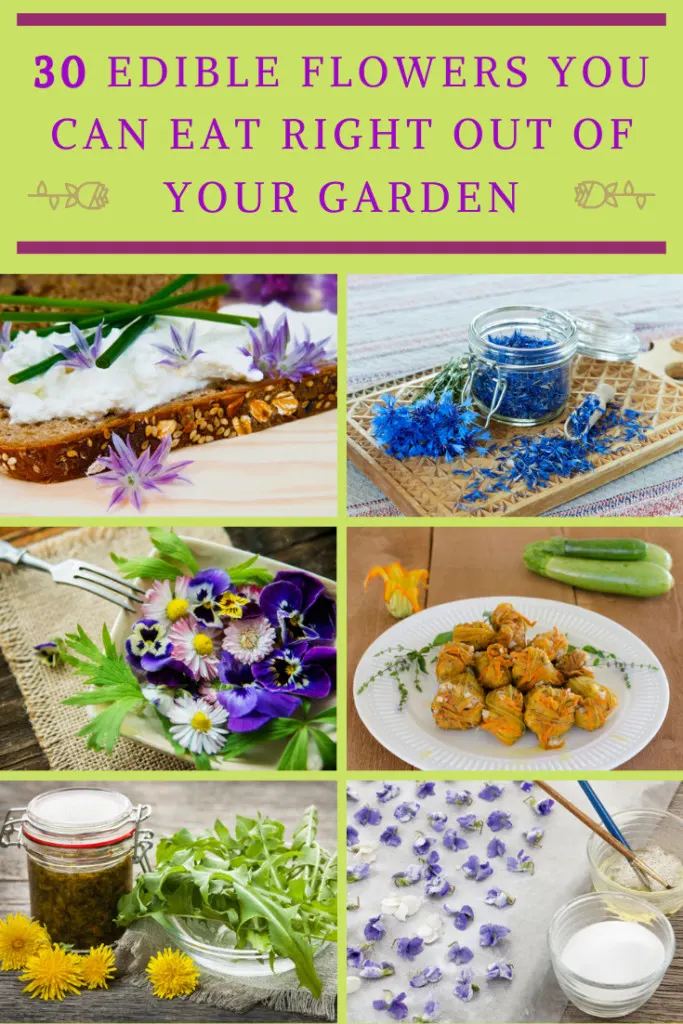
Lavender’s fragrant purple flowers are not only visually stunning but also have a unique floral flavor. Use them sparingly in desserts, teas, or even savory dishes like roasted vegetables.
5. Marigolds
Marigolds come in vibrant shades of yellow and orange, and their petals have a slightly citrusy flavor. Add them to salads, rice dishes, or use them as a garnish for cocktails.
6. Pansies
Pansies have beautiful, delicate petals that come in a variety of colors. They have a mild, slightly grassy taste, making them ideal for decorating cakes, pastries, or even ice creams.
7. Violets
Violets have a delicate, sweet flavor that pairs well with both sweet and savory dishes. Use them to adorn cakes, tarts, salads, or infuse them into vinegars and syrups.
8. Dandelions
Yes, dandelions are edible too! Their blossoms can be used to make dandelion jellies, infused oils, or even battered and fried as a unique culinary experience.
9. Chive Blossoms
Chive blossoms have a subtle onion flavor and are a delightful addition to salads, soups, and dips. You can also use them as a flavorful garnish for savory dishes.
10. Borage
Borage flowers have a beautiful blue hue and a cucumber-like taste. They are perfect for summer drinks, salads, or frozen into ice cubes to add a refreshing touch to your drinks.
11. Daisies
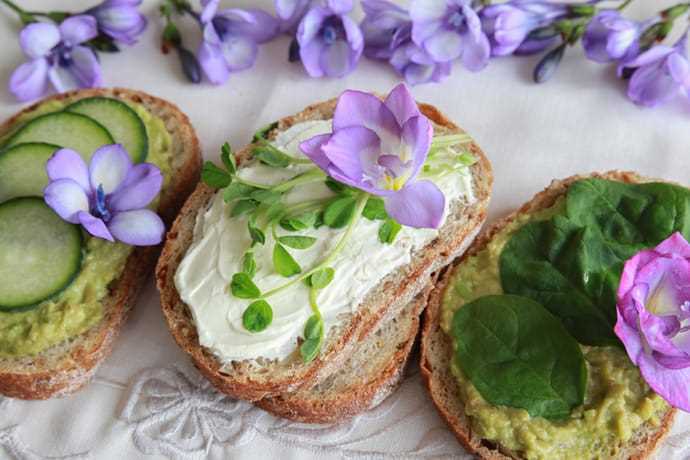
Daisies have a mild, slightly bitter flavor. They can be eaten raw in salads, used to flavor vinegars, or even dried and brewed into a soothing tea.
12. Bee Balm
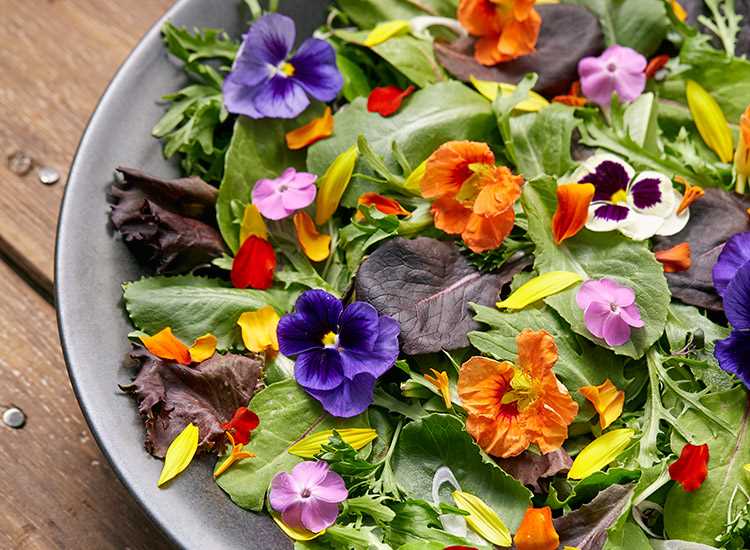
Bee balm, also known as monarda, has vibrant red, pink, or purple flowers that have a citrusy flavor. Use them in salads, fruit salads, or steep them into herbal teas.
13. Sunflowers
Sunflower petals have a slightly bitter taste, but they can add a unique touch to dishes like salads, stir-fries, or even used as a garnish for soups.
14. Chamomile
Chamomile flowers have a delicate, apple-like flavor. They are commonly used to make soothing teas but can also be used to infuse desserts, baked goods, or cocktails.
15. Hibiscus
Hibiscus flowers add vibrant color and a tangy, cranberry-like flavor to dishes. They can be used in salads, jams, jellies, or brewed into a refreshing herbal tea.
Remember to only consume flowers that have been grown organically and are free from pesticides or other harmful chemicals. Also, always use edible flowers sparingly, as too much can overwhelm the flavors in a dish. Enjoy experimenting and adding these gorgeous edible blooms to your culinary creations!
The Surprising Health Benefits of Edible Flowers
Edible flowers not only add beauty and flavor to dishes, but they also come with a range of surprising health benefits. Incorporating these vibrant blossoms into your diet can provide a boost of nutrients and other beneficial compounds. Here are some of the health benefits that edible flowers can offer:
1. Nutrient-Rich:
Many edible flowers, such as nasturtiums, violets, and pansies, are packed with essential vitamins and minerals. These include vitamin C, vitamin A, antioxidants, and potassium. Consuming a variety of edible flowers can help ensure that you are getting a diverse range of nutrients to support your overall health.
2. Antioxidant Powerhouse:
Edible flowers are rich in antioxidants that help protect the body against cellular damage caused by free radicals. Antioxidants can help reduce the risk of chronic diseases like heart disease, cancer, and neurodegenerative disorders.
3. Digestive Support:
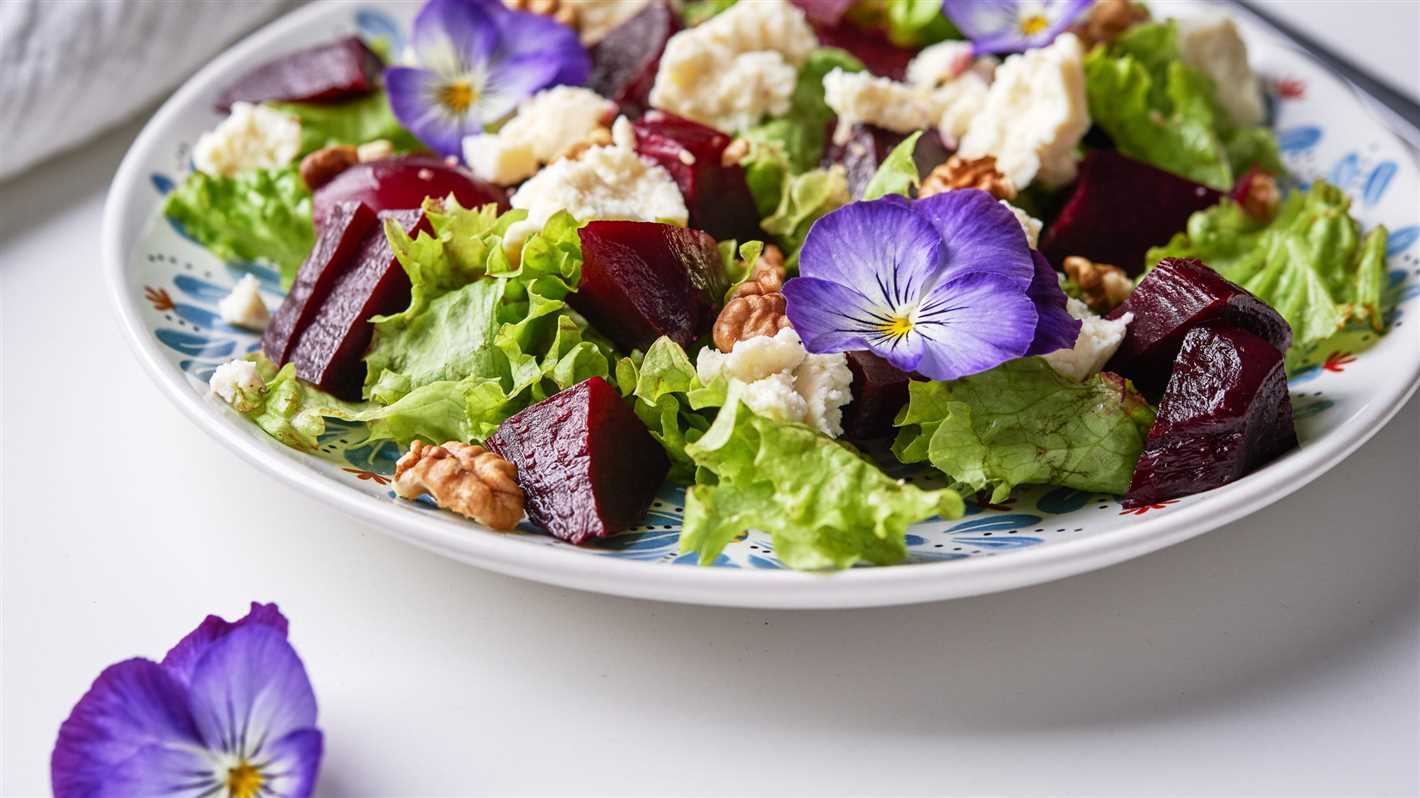
Some edible flowers, including chamomile and lavender, have calming and soothing properties that can aid digestion. They can help relieve digestive discomfort and promote a healthy digestive system.
4. Mood Enhancer:
Certain edible flowers, like lavender and rose, are known for their calming and stress-reducing effects. They can help improve mood and promote relaxation, making them a great addition to teas or desserts.
5. Anti-inflammatory Properties:
Several edible flowers, including marigold and calendula, contain compounds that have anti-inflammatory properties. These flowers can help reduce inflammation in the body and provide relief from conditions like arthritis and inflammatory bowel disease.
6. Immune Booster:
Some edible flowers, including elderflower and calendula, have immune-boosting properties. They can help strengthen the immune system, making it more resistant to infections and diseases.
7. Weight Management:
Certain edible flowers, such as dandelion and hibiscus, can aid in weight management. They can help suppress appetite, boost metabolism, and promote healthy digestion, making them a great addition to a balanced diet.
8. Skin Health:
Many edible flowers, such as roses and calendula, have skin-nourishing properties. They can help improve the appearance and health of the skin by promoting collagen production, reducing inflammation, and providing hydration.
9. Respiratory Health:
Some edible flowers, like violets and chamomile, have respiratory health benefits. They can help soothe coughs, reduce congestion, and promote a healthy respiratory system.
Adding edible flowers to your diet can be a delightful way to enhance your meals while reaping the numerous health benefits they offer. However, it is important to ensure that the flowers you consume are organically grown and safe for consumption. Additionally, if you have any allergies or medical conditions, it is advisable to consult with a healthcare professional before incorporating edible flowers into your diet.
Adding a Splash of Color and Flavor to Your Dishes
When it comes to cooking, adding edible flowers to your dishes is a creative and unique way to enhance both the visual appeal and the flavor of your food. Edible flowers can be used in a variety of dishes, including salads, desserts, drinks, and even main courses. By incorporating these colorful blooms into your cooking, you can truly take your culinary creations to the next level.
Choosing the Right Flowers
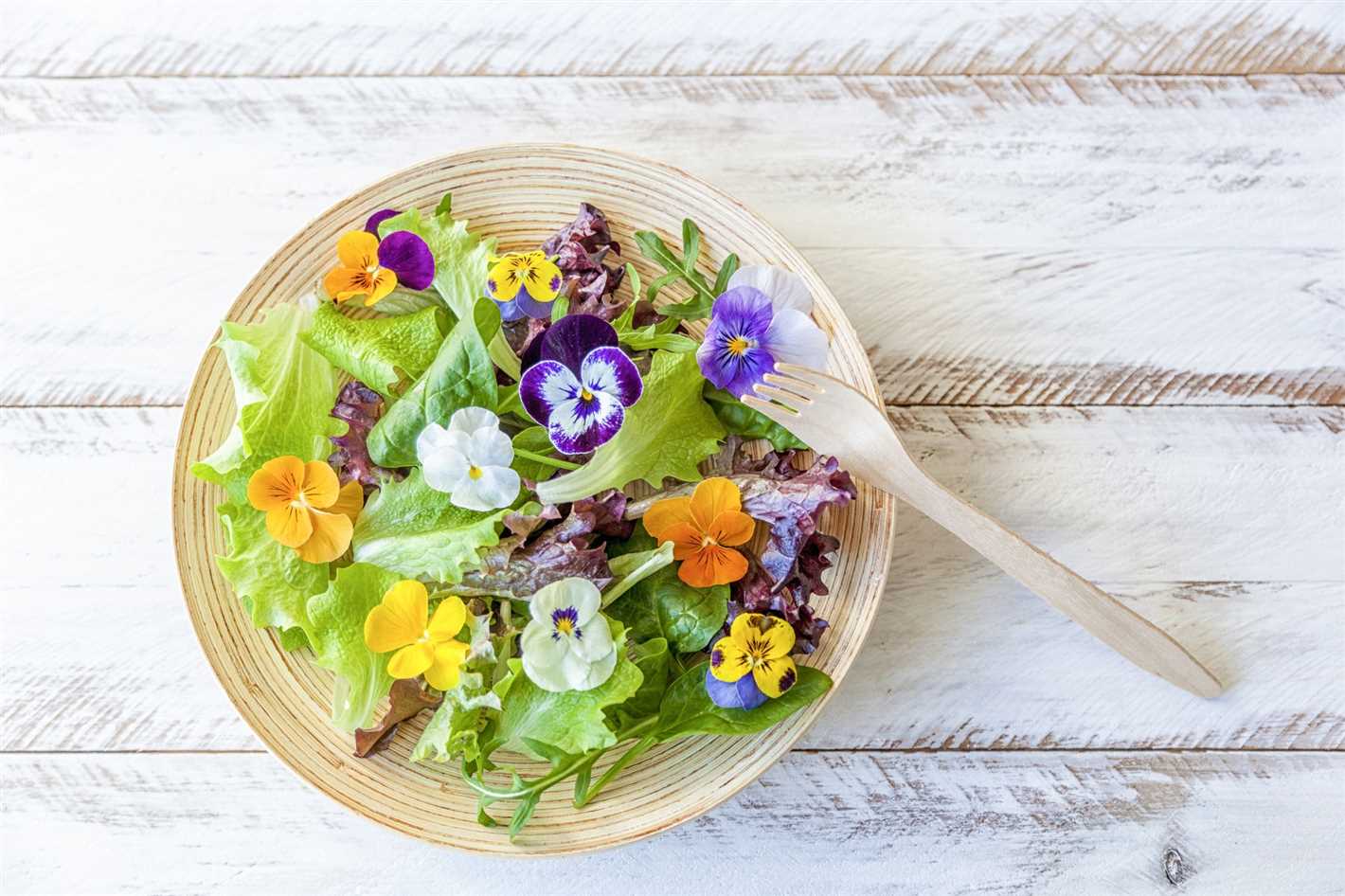
Before incorporating edible flowers into your dishes, it’s important to choose the right ones. Not all flowers are safe to eat, so it’s essential to do your research and ensure that the flowers you are using are indeed edible. Look for flowers that are organically grown and free from pesticides.
Some popular edible flowers include marigolds, nasturtiums, pansies, roses, and violets. Each type of flower adds its own unique flavor and visual element to your dishes, so feel free to experiment and find the combinations that you enjoy the most.
Preparing and Using Edible Flowers
Once you have chosen your edible flowers, it’s important to prepare them properly before using them in your dishes. Start by gently washing the flowers to remove any dirt or debris. Then, remove the stems and any bitter parts of the flowers to ensure that only the edible parts are used.
When it comes to using edible flowers in your dishes, the options are endless. You can sprinkle them on top of salads for a pop of color, add them to drinks for a visually stunning presentation, or incorporate them into desserts for a touch of elegance. Edible flowers can also be used to garnish main courses or to infuse oils and vinegars for unique flavor profiles.
Important Considerations
While edible flowers can be a beautiful and flavorful addition to your dishes, it’s important to keep a few key considerations in mind. First, remember that not all flowers are edible, so be sure to do your research before consuming any flowers that you are unsure about. Additionally, some individuals may have allergies or sensitivities to certain flowers, so it’s essential to exercise caution and only consume flowers that you know are safe for you.
Furthermore, it’s important to use edible flowers sparingly. While they add a gorgeous touch to your dishes, too many flowers can overwhelm the flavor profile and become overpowering. Use them as accents or garnishes to bring a delicate and subtle touch to your meals.
Conclusion
Adding edible flowers to your dishes is a simple and effective way to elevate your culinary creations. With their vibrant colors and delicate flavors, edible flowers are sure to impress your guests and bring a touch of uniqueness to your meals. So go ahead, get creative, and discover the delightful delicacies that edible flowers have to offer!
How to Grow Your Own Edible Flower Garden
Growing your own edible flower garden can be a fun and rewarding experience. Not only do edible flowers add beauty to your garden, but they also provide a delicious and unique addition to your dishes. Here are some steps to help you get started:
1. Choose the right flowers
Not all flowers are edible, so it’s important to do your research and choose the right varieties for your edible flower garden. Some popular edible flowers include nasturtiums, marigolds, pansies, and violets.
2. Start with healthy soil
Before planting your flowers, make sure your soil is healthy and well-draining. You can improve the quality of your soil by adding organic matter, such as compost or aged manure.
3. Plant your flowers
Follow the planting instructions for each variety of flower you choose. Some flowers may need to be started from seeds indoors, while others can be directly sown into the garden. Make sure to space your plants according to their specific requirements to allow for proper growth.
4. Provide adequate sunlight
Most edible flowers require full sun to thrive. Ensure that your flower garden receives at least 6-8 hours of direct sunlight each day. If you have a shady garden, choose flowers that can tolerate partial shade.
5. Water regularly
Keep your edible flower garden well-watered, especially during dry spells. Water your plants deeply and evenly to encourage healthy root growth. Be careful not to overwater, as this can lead to root rot.
6. Be mindful of pests
Just like any garden, your edible flower garden may attract pests. Keep an eye out for common garden pests like aphids and slugs. Consider using organic pest control methods, such as companion planting or natural insecticides, to protect your flowers.
7. Harvest your flowers
When your flowers are in full bloom, it’s time to harvest them for culinary use. Pick the flowers in the early morning when they are at their freshest. Gently remove the petals or whole flowers from the plant, taking care not to damage the rest of the plant.
8. Enjoy your edible flowers
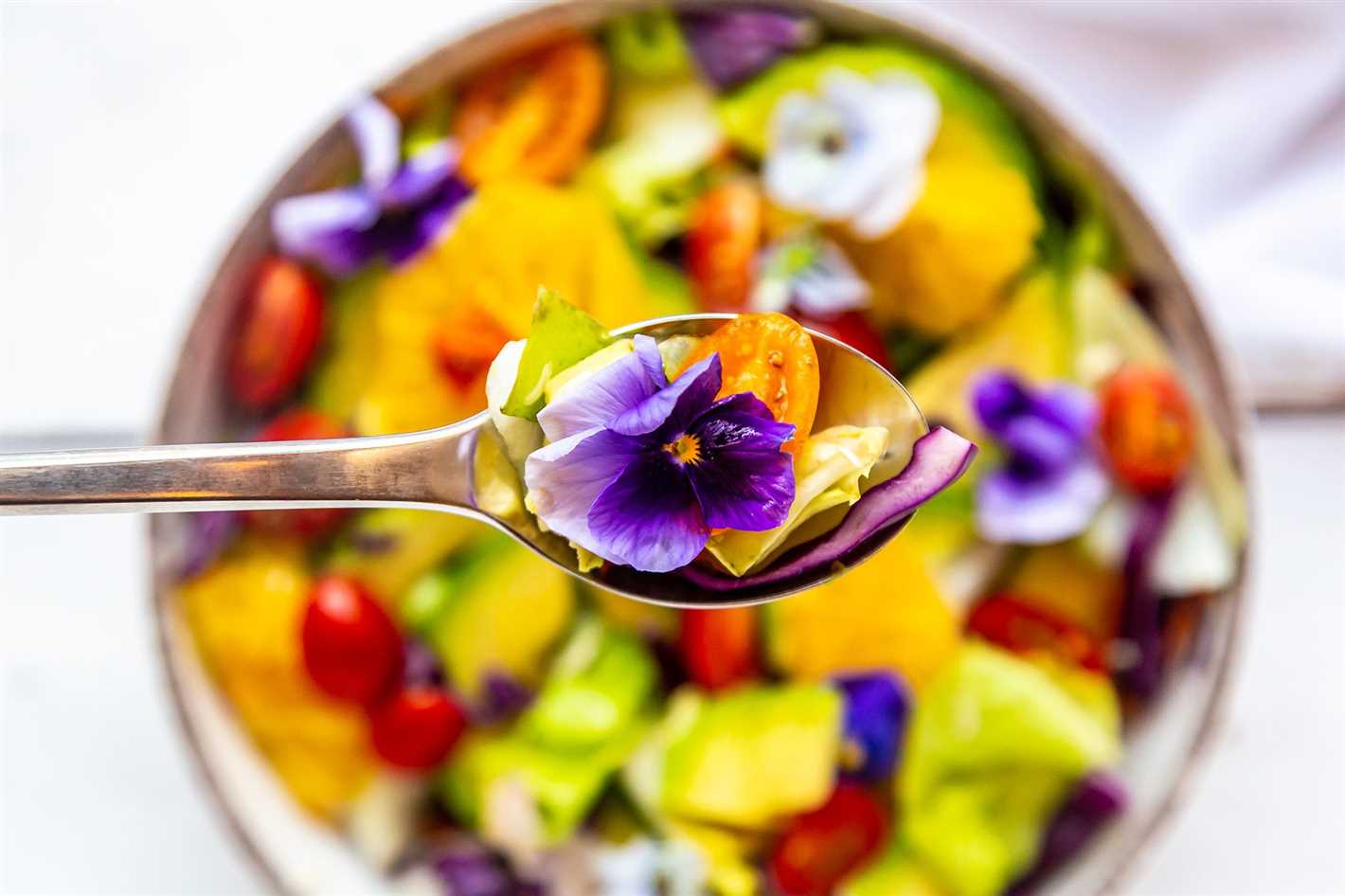
Now that you have harvested your edible flowers, it’s time to enjoy them! Use your flowers to garnish salads, decorate cakes, infuse oils or vinegars, or create unique floral cocktails. Remember to only use flowers that are safe for consumption and avoid using any pesticides or chemicals on your flowers.
Follow these steps, and you’ll be on your way to growing a beautiful and delicious edible flower garden right in your own backyard!
Exquisite Blossoms to Savor From Your Garden
When it comes to culinary creations, adding a touch of floral flavor can elevate any dish to new heights. From salads to desserts, edible flowers not only provide a visual feast but also offer unique and delicate tastes. Here are some exquisite blossoms you can savor from your own garden:
Rose Petals
Rose petals are not only beautiful but also impart a subtle floral flavor. They can be used to infuse oils, make rosewater or used as a garnish on desserts.
Calendula
Calendula, also known as marigold, has a slightly spicy flavor that adds a vibrant touch to salads.
Nasturtium
Nasturtium flowers have a peppery taste, which pairs well with salads and savory dishes.
Lavender
Lavender flowers have a sweet and floral taste that is often used in baking, making tea, or creating syrups.
Pansy
Pansy flowers have a mild, slightly earthy flavor, making them a great addition to salads, desserts, or as a decorative touch to a cake.
Chrysanthemum
Chrysanthemum flowers have a bitter taste and are commonly used in teas and stir-fries.
Violet
Violet flowers have a sweet, perfumed flavor and can be used to garnish salads, decorate desserts, or even made into syrup.
Dandelion
Dandelion flowers have a slightly bitter taste and can be used in salads, infused into oil, or made into a flavorful jelly.
Hibiscus
Hibiscus flowers have a tart flavor and are often used to make teas, jams, or added as a garnish to cocktails.
Borage
Borage flowers have a mild cucumber-like taste and can be used to garnish salads, added to drinks or frozen into ice cubes.
Sunflower Petals
Sunflower petals have a subtle bitterness that adds complexity to salads or can be used as a garnish on soups and sandwiches.
Chive Blossoms
Chive blossoms have a mild onion flavor and can be used to add a pop of color and taste to salads, omelets, or infused into vinegar.
Viola
Viola flowers have a delicate, sweet flavor that pairs well with fruit salads, desserts, or even as a decorative addition to cocktails.
Arugula Blossoms
Arugula blossoms have a peppery taste and can be used to add a unique flavor to salads, pesto, or as a garnish on pizzas.
Dianthus
Dianthus flowers have a clove-like flavor that can be used to flavor drinks, desserts, or added to butter for a unique twist.
| Flower | Best Pairings |
|---|---|
| Rose Petals | Chocolate, strawberries, vanilla |
| Nasturtium | Cheese, eggs, seafood |
| Lavender | Lemon, honey, blueberries |
| Chrysanthemum | Soy sauce, ginger, sesame oil |
| Borage | Cucumber, lemon, mint |
Note: When consuming edible flowers, it is important to ensure that they have not been treated with any pesticides or chemicals. It is best to grow your own flowers or source them from organic suppliers.
Exploring the Unique Taste Profiles of Edible Blossoms
Edible flowers not only add visual appeal to dishes, but they also bring unique flavors and textures that can elevate your culinary creations. From sweet to peppery, floral to herbal, each edible blossom offers a distinct taste experience. Let’s explore some of the most popular edible flowers and their delightful taste profiles:
Rose
Rose petals offer a delicate and subtly sweet flavor with a hint of fruitiness. They can be used in various dishes, from salads and desserts to herbal teas.
Lavender
Lavender flowers have a floral and slightly sweet taste, reminiscent of its calming aroma. They are often used in tea, baked goods, and as a garnish for cocktails or salads.
Nasturtium
Nasturtium flowers have a peppery and slightly spicy flavor. They can be used to add a unique kick to salads, stir-fries, and even infused into vinegars and oils.
Calendula
Calendula, also known as marigold, imparts a peppery and tangy taste. The petals can be added to salads, soups, and stews for a vibrant touch and a mild spice.
Violet
Violet flowers have a delicate and slightly perfumed taste, with a hint of sweetness. They can be used as a decorative element in salads or candied for desserts.
These are just a few examples of the many edible flowers available, each offering its own unique taste profile. It’s important to keep in mind that not all flowers are safe to consume, so it’s essential to do thorough research or consult a reliable source before adding them to your dishes. Experimenting with different edible blossoms can add a touch of creativity and flavor to your culinary adventures.
Creative Ways to Incorporate Edible Flowers in Your Recipes
Adding edible flowers to your recipes is a great way to introduce unique flavors and visual appeal. Here are some creative ideas to incorporate edible flowers into your dishes:
1. Salads and salsas
Add a pop of color and freshness to your salads and salsas by tossing in some edible flowers. Nasturtiums, pansies, and violets are great options that bring a mild peppery or sweet flavor to the dish.
2. Infused oils and vinegars
Make your own infused oils and vinegars by combining edible flowers with a neutral oil or vinegar. Use lavender, rose, or chamomile flowers to add a delicate floral aroma to your dressings or marinades.
3. Desserts
Decorate your cakes, cupcakes, and other desserts with edible flowers for an elegant touch. Choose flowers such as roses, calendula, or lavender that compliment the flavors of your desserts.
4. Herbal teas
Brew a flavorful and aromatic cup of herbal tea by steeping dried or fresh edible flowers. Chamomile, hibiscus, and lavender flowers are popular choices that can be enjoyed hot or cold.
5. Ice cubes and popsicles
Add a touch of whimsy to your beverages by freezing edible flowers into ice cubes or popsicles. Not only do they look beautiful, but they also impart a subtle flavor as they melt.
6. Floral butters
Add a unique twist to your butter by mixing in finely chopped or powdered edible flowers. Spread the floral-infused butter on toast or use it to finish off grilled meats or vegetables.
7. Flower-infused syrups
Create your own flower-infused syrups by simmering edible flowers with sugar and water. Drizzle these syrups over pancakes, waffles, or use them as a sweet addition to cocktails or mocktails.
8. Garnishes
Use edible flowers as garnishes to add visual appeal to your dishes. Sprinkle them over soups, risottos, or simply use them to garnish plates for an elegant presentation.
9. Flower jellies and jams
Make your own flower jellies and jams using edible flowers such as rose petals or elderflowers. Spread these floral-infused jams on toast or use them as a filling for pastries.
10. Flower-infused cocktails
Elevate your cocktails by adding edible flowers to the mix. Whether you’re muddling them, using them as a garnish, or freezing them into ice cubes, edible flowers add an extra touch of elegance to your drinks.
Remember to always use edible flowers that are free from pesticides and other chemicals. It’s also important to consume them in moderation, as some individuals may have allergies or sensitivities to certain flowers. So go ahead, get creative, and enjoy the delightful flavors and visual appeal that edible flowers bring to your recipes!
A Word of Caution: Identifying and Preparing Edible Flowers Safely
While exploring the world of edible flowers can be a fun and exciting culinary adventure, it is important to approach it with caution. Not all flowers are safe to consume, and proper identification is crucial to ensure that you are not ingesting anything harmful.
Identifying Edible Flowers
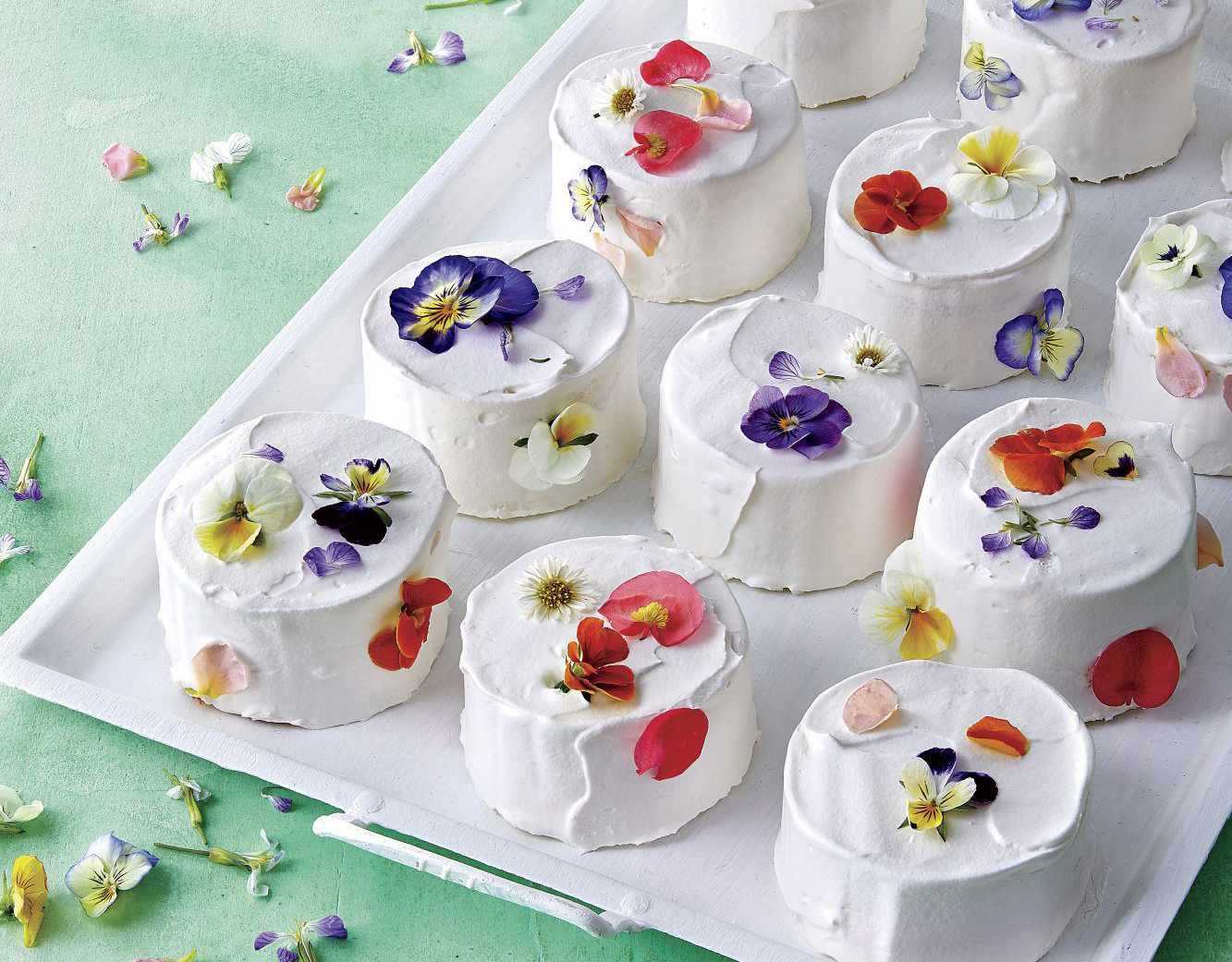
Before plucking and devouring flowers from your garden, take the time to properly identify them. Here are a few tips to help you get started:
- Research: Look up the specific flower you are interested in consuming. There are numerous online resources, books, and field guides available to help you learn about different edible flowers.
- Consult an expert: If you are unsure about the identity of a flower, seek advice from a knowledgeable local horticulturist or botanist.
- Be cautious: Avoid consuming flowers that have been treated with pesticides or other chemicals. Stick to flowers grown organically to ensure their safety.
Safely Preparing Edible Flowers
Once you have identified edible flowers, it is important to prepare them safely before incorporating them into your culinary creations. Here are a few guidelines to follow:
- Thoroughly wash: Rinse the flowers gently under cold running water to remove any dirt or insects that may be present.
- Remove the pistils and stamens: In some flowers, such as roses, the pistils and stamens can have a bitter taste and should be removed before consumption.
- Choose the most vibrant petals: When using flowers like pansies or violets, select the most vibrant and visually appealing petals.
- Use petals sparingly: In most cases, the petals of edible flowers are the only parts that are consumed. Use them sparingly as a garnish or flavor enhancer rather than as a main ingredient.
Cautionary Notes
| 1. | Some individuals may have allergies or sensitivities to certain flowers, so it is important to consume them in moderation and be aware of any potential adverse reactions. |
| 2. | Avoid consuming flowers picked from roadways, as they may have been exposed to pollutants and chemicals. |
| 3. | Pregnant or breastfeeding individuals should exercise caution and consult with a healthcare professional before consuming edible flowers. |
By identifying and preparing edible flowers safely, you can enjoy the unique flavors and visual appeal they bring to your culinary creations while ensuring your well-being.
Questions and Answers:
What are some edible flowers that can be found in my garden?
Some edible flowers that can be found in your garden include roses, nasturtiums, pansies, borage, and calendula.
Can I eat any type of rose petals?
Yes, you can eat any type of rose petals as long as they are pesticide-free and have a pleasant aroma.
What are some ways to use edible flowers in cooking?
Some ways to use edible flowers in cooking include adding them to salads, soups, cocktails, and desserts, or using them as garnishes.
Are all flowers safe to eat?
No, not all flowers are safe to eat. It’s important to only consume flowers that are known to be edible and have not been treated with pesticides.
Can I use edible flowers to make herbal teas?
Yes, you can use edible flowers to make herbal teas. Some popular choices for flower-infused teas include chamomile, lavender, and hibiscus.







